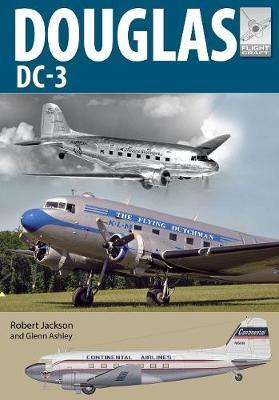Douglas DC-3: The Airliner That Revolutionised Air Transport

Douglas DC-3: The Airliner That Revolutionised Air Transport
No airliner in the history of commercial aviation has had a more profound effect than the Douglas DC-3. It was reliable, easy to maintain and carried passengers in greater comfort than ever before.
Its origins stem from a design by the Douglas Aircraft Company of Santa Monica, California. Known as the Douglas Commercial One, or DC-1, this new aircraft was revolutionary in concept. It was quickly developed into the DC-2, an airliner that lead to Douglas' domination of the domestic air routes of the United States, and of half the world.
Experience with the DC-2 led to the development of an improved version, the Douglas Sleeper Transport (DST), first flown on 17 December 1935. This in turn evolved into a 21-seat variant, the DC-3, featuring many improvements. The first American Airlines DC-3 entered service in June 1936, and within three years of its introduction the aircraft accounted for a staggering 95 percent of all commercial air traffic in the United States. From commencement of service to the Japanese attack on Pearl Harbor, the DC-3 increased domestic revenue passenger miles more than fivefold. Of the 322 aircraft operated by the country's airlines in December 1941, 260 were DC-3s. At the pre-war peak, 30 foreign airlines operated the DC-3. On the eve of war, the DC-3's scheduled flights represented 90 percent of international air traffic.
In addition to over 600 civil examples of the DC-3, 10,048 military C-47 variants were built, as well as 4,937 produced under license in the USSR as the Lisunov Li-2 and 487 built by Showa and Nakajima in Japan as the L2D. After the war, thousands of surplus C-47s, previously operated by several air forces, were converted for civilian use. These aircraft became the standard equipment of almost all the world's airlines, remaining in front-line service for many years. The ready availability of cheap, easily maintained ex-military C-47s, both large and fast by the standards of the day, jump-started the worldwide post-war air transport industry.
The full remarkable story of the DC-3, and its ancestor, the DC-2, is told in these pages, providing a wealth of information for the modeler and the enthusiast alike.
PRP: 122.33 Lei
Acesta este Prețul Recomandat de Producător. Prețul de vânzare al produsului este afișat mai jos.
110.10Lei
110.10Lei
122.33 LeiLivrare in 2-4 saptamani
Descrierea produsului
No airliner in the history of commercial aviation has had a more profound effect than the Douglas DC-3. It was reliable, easy to maintain and carried passengers in greater comfort than ever before.
Its origins stem from a design by the Douglas Aircraft Company of Santa Monica, California. Known as the Douglas Commercial One, or DC-1, this new aircraft was revolutionary in concept. It was quickly developed into the DC-2, an airliner that lead to Douglas' domination of the domestic air routes of the United States, and of half the world.
Experience with the DC-2 led to the development of an improved version, the Douglas Sleeper Transport (DST), first flown on 17 December 1935. This in turn evolved into a 21-seat variant, the DC-3, featuring many improvements. The first American Airlines DC-3 entered service in June 1936, and within three years of its introduction the aircraft accounted for a staggering 95 percent of all commercial air traffic in the United States. From commencement of service to the Japanese attack on Pearl Harbor, the DC-3 increased domestic revenue passenger miles more than fivefold. Of the 322 aircraft operated by the country's airlines in December 1941, 260 were DC-3s. At the pre-war peak, 30 foreign airlines operated the DC-3. On the eve of war, the DC-3's scheduled flights represented 90 percent of international air traffic.
In addition to over 600 civil examples of the DC-3, 10,048 military C-47 variants were built, as well as 4,937 produced under license in the USSR as the Lisunov Li-2 and 487 built by Showa and Nakajima in Japan as the L2D. After the war, thousands of surplus C-47s, previously operated by several air forces, were converted for civilian use. These aircraft became the standard equipment of almost all the world's airlines, remaining in front-line service for many years. The ready availability of cheap, easily maintained ex-military C-47s, both large and fast by the standards of the day, jump-started the worldwide post-war air transport industry.
The full remarkable story of the DC-3, and its ancestor, the DC-2, is told in these pages, providing a wealth of information for the modeler and the enthusiast alike.
Detaliile produsului









